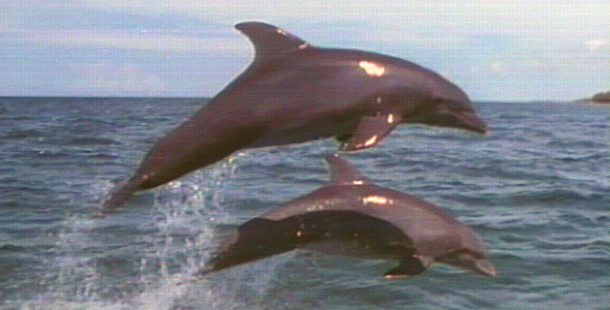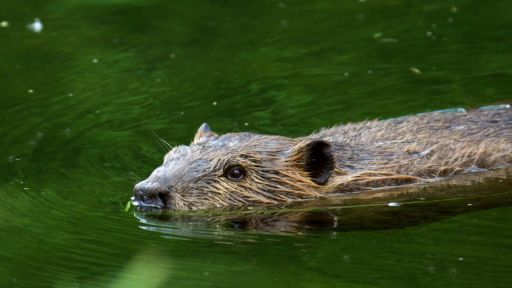In the 1950s, a blindfolded dolphin forever changed the way people think about these seagoing mammals. At the time, researchers weren’t sure why dolphins produced their remarkable range of clicks, trills, moans, and squeaks, which are documented on NATURE’s Dolphins: Close Encounters.
Dolphins use sound to identify objects. But some guessed that the animals might be using sonar, in which sound is bounced off a target, to “see” their prey and surroundings. In theory, the idea made perfect sense, because while light doesn’t penetrate very far into the sea, sounds can travel great distances. The problem was finding proof that dolphins actually used echolocation.
The late Kenneth S. Norris, one of the pioneers of dolphin research, found a way to obtain the evidence. Working with a captive bottlenose dolphin at California’s Marineland aquarium, Norris and his colleagues devised a way to blindfold the dolphin and test its ability to locate and identify objects. He discovered that dolphins can use sound to determine more than just distance and direction — they could even identify size, shape, and texture. One dolphin, for instance, could tell the difference between a copper sheet and one made of aluminum. More recent studies have shown that dolphins can discriminate between metal cylinders that differ by just 1/3000th of an inch in diameter. Researchers now know that dolphins generate the high-frequency clicks used in echolocation in their nasal sacks, which are located behind an oil-filled organ in the head called the melon. The melon acts like a lens, focusing the sound into a narrow beam that is projected in front of the animal.
Dolphin biosonar is remarkably sensitive. After the sound strikes an object, the echo is picked up by a specialized bone in the jaw, which transmits the signal to the brain. Not surprisingly, dolphin brains feature a huge sound-processing center.
“In an ocean full of dullards, what good is such a brain?” Norris once joked. “Certainly complicated nervous machinery is not needed for concourse with jellyfish, sea cucumbers, and sponges.” The answer, he noted, was that dolphins use sound to sense the world around them.
But not all dolphins produce the same kind of biosonar pulses. Some use so-called “broadband” pulses, which spread the energy out over a wide range of frequencies. This is like broadcasting on many radio stations at the same time. Others, in contrast, produce very narrow, focused pulses.
These differences have prompted some debate about exactly how dolphins use their biosonar. Some scientists believe it is primarily a tool for finding food. Others believe the animals use it to navigate. Whatever the answer, researchers agree that dolphin biosonar is a remarkably sensitive sensory system that people may never truly understand.
Norris had a similar view. “It is very hard for us to imagine sensory systems and processes we do not have,” he said in a 1980 interview. “It’s a bit like a man from outer space tapping into the [phone system] and trying to make sense of all the beeps and sounds.”











